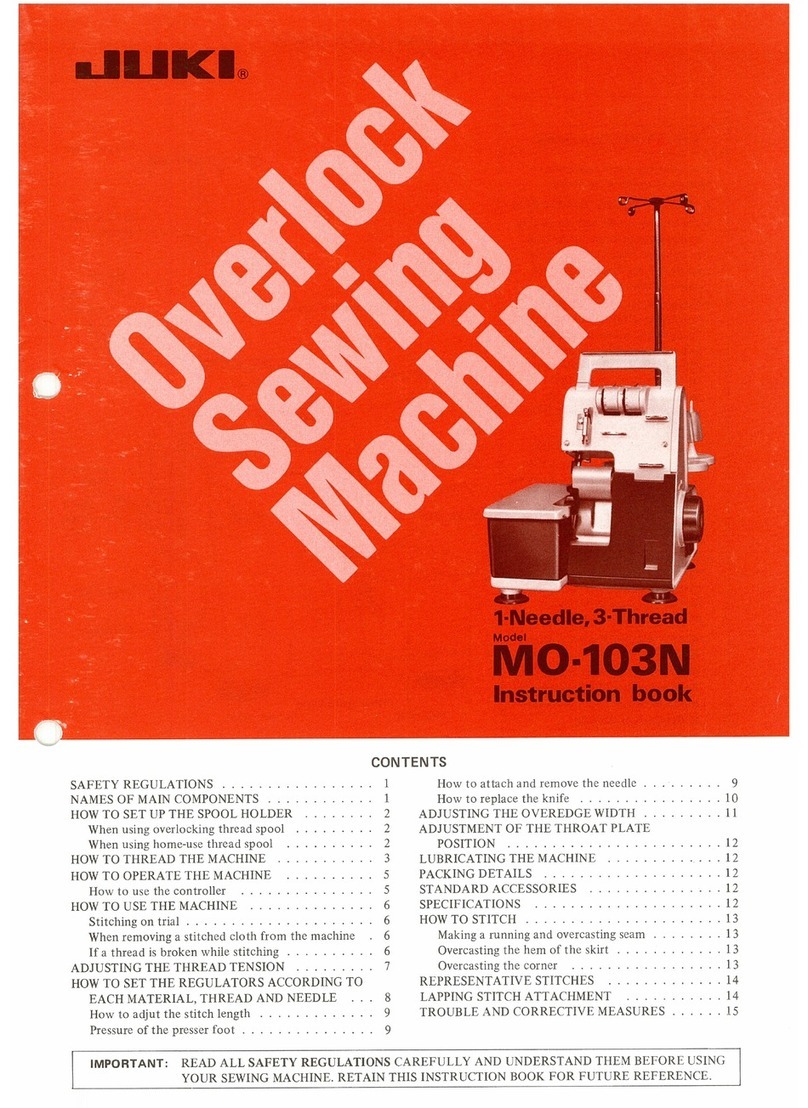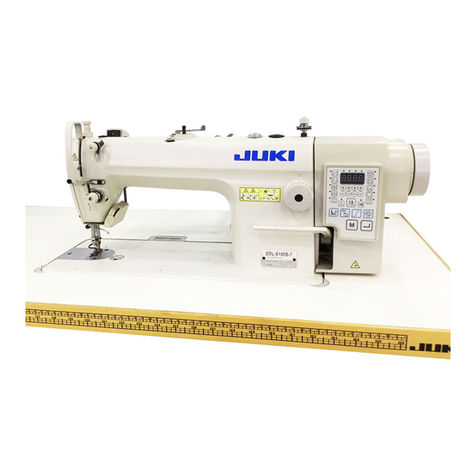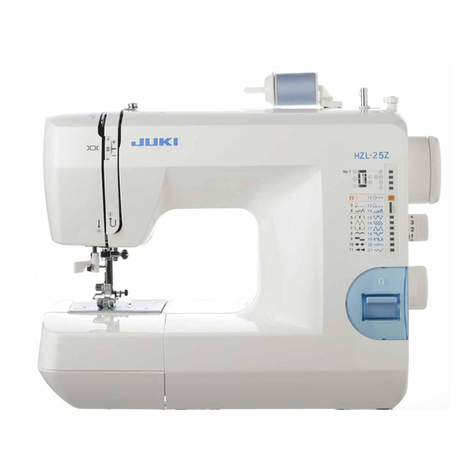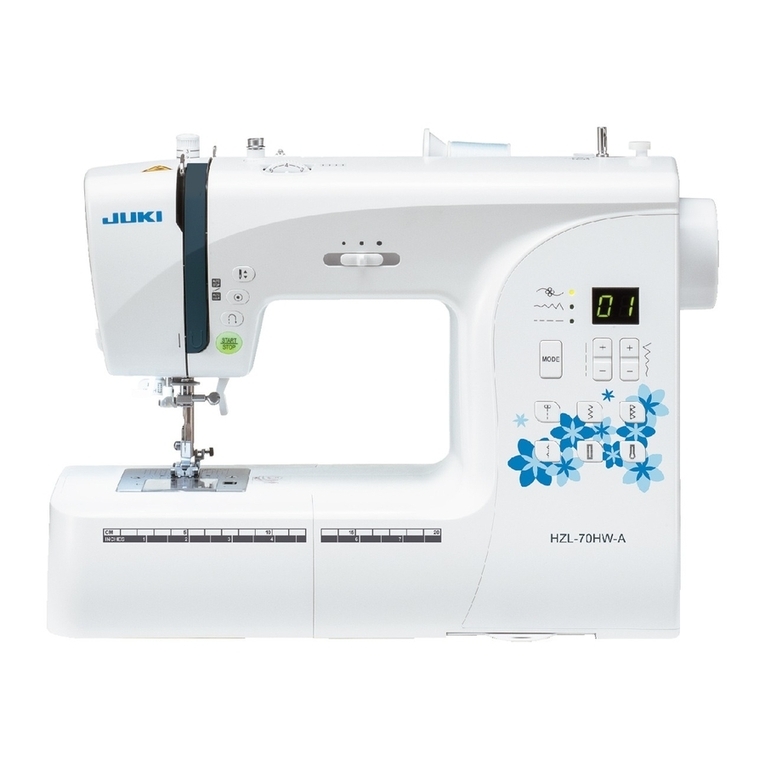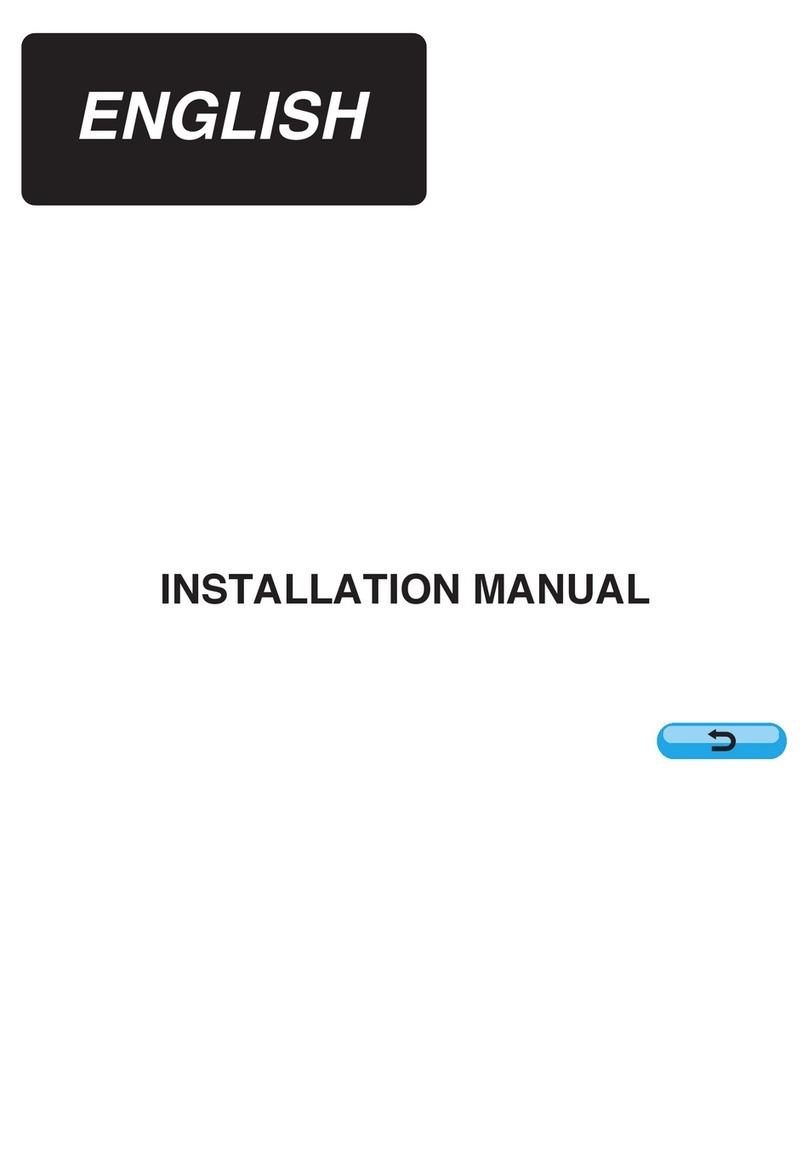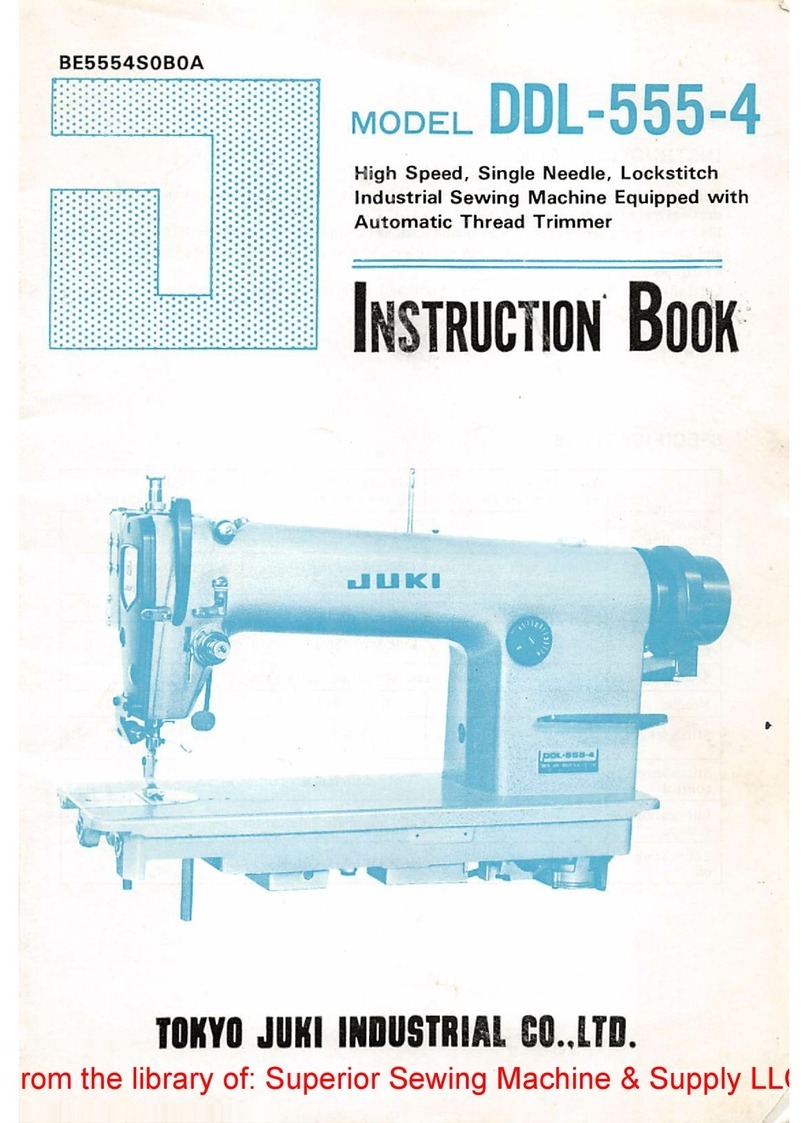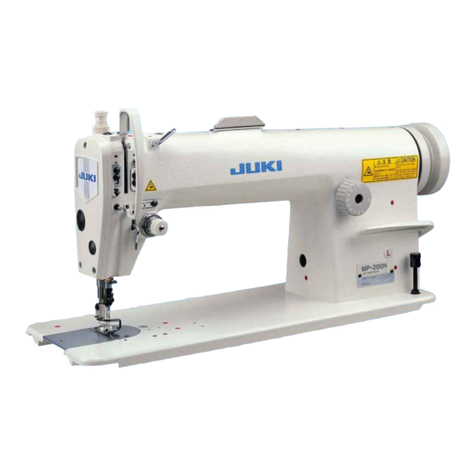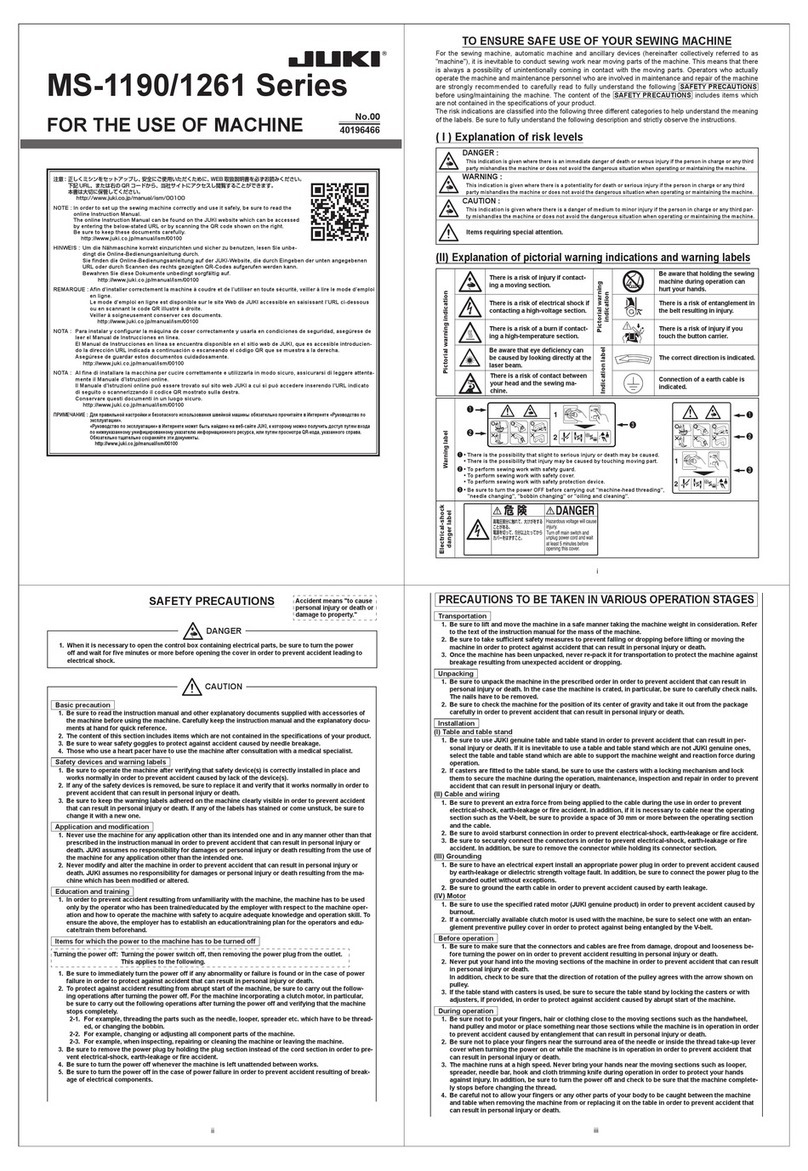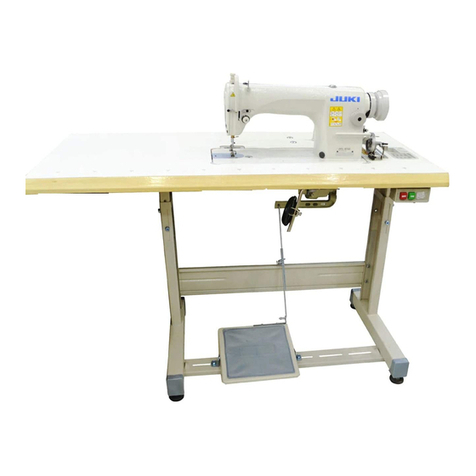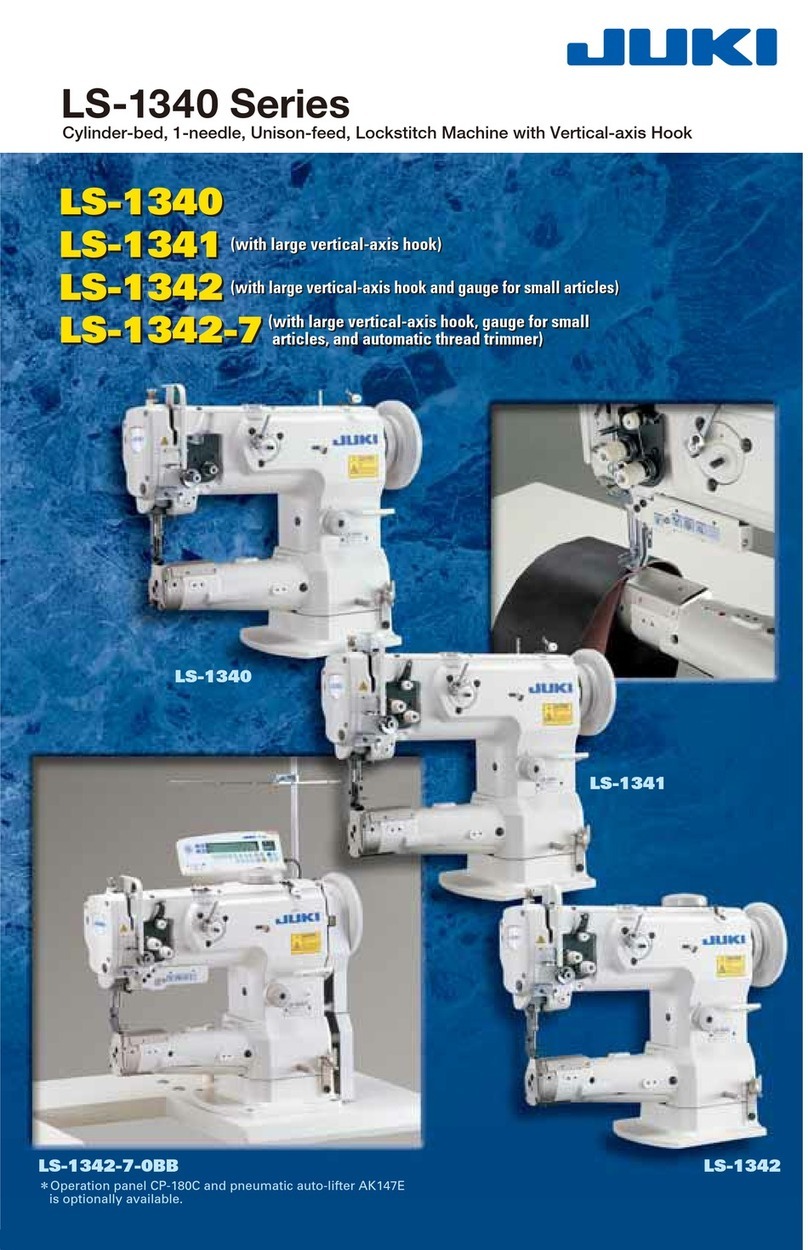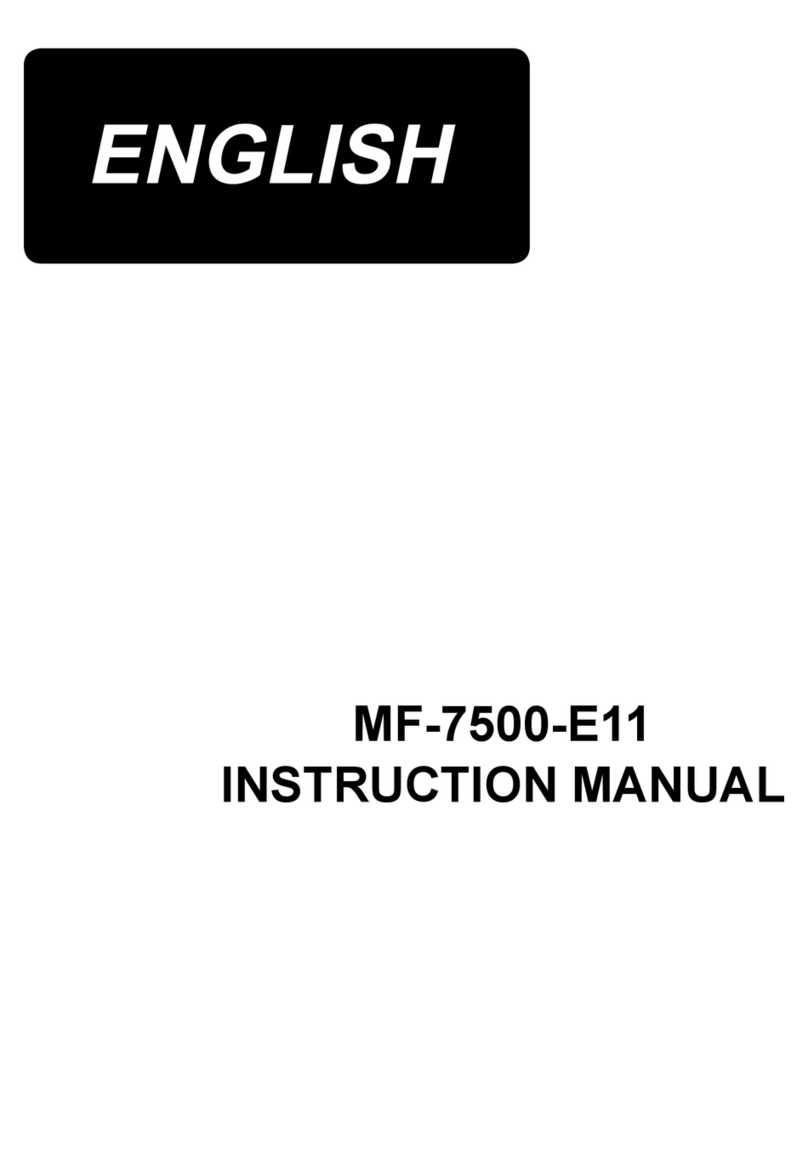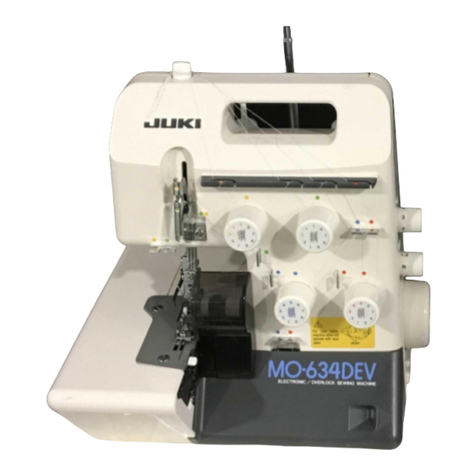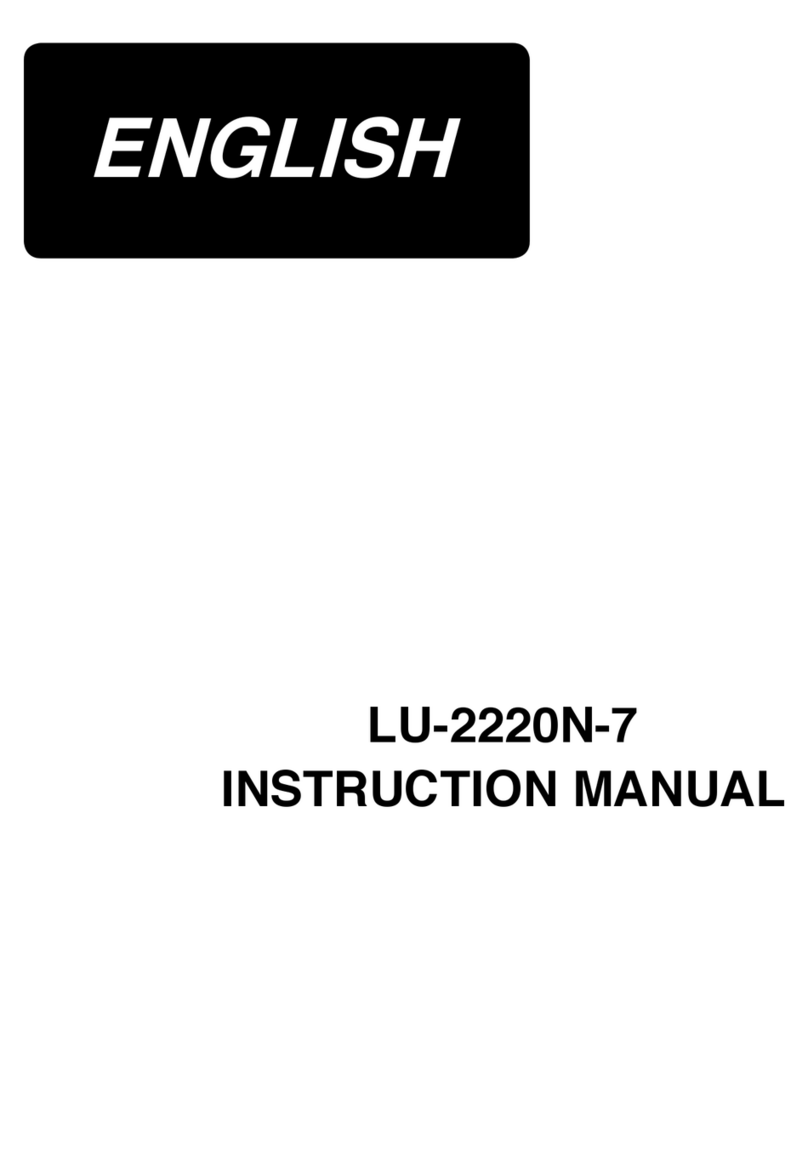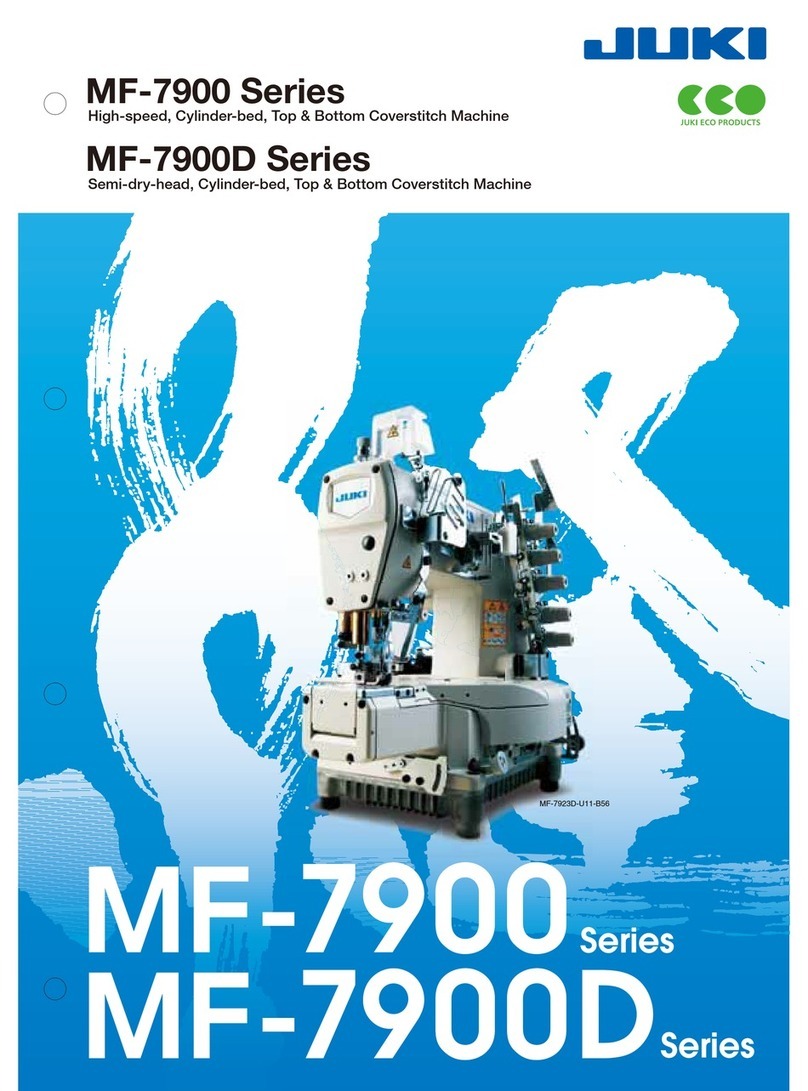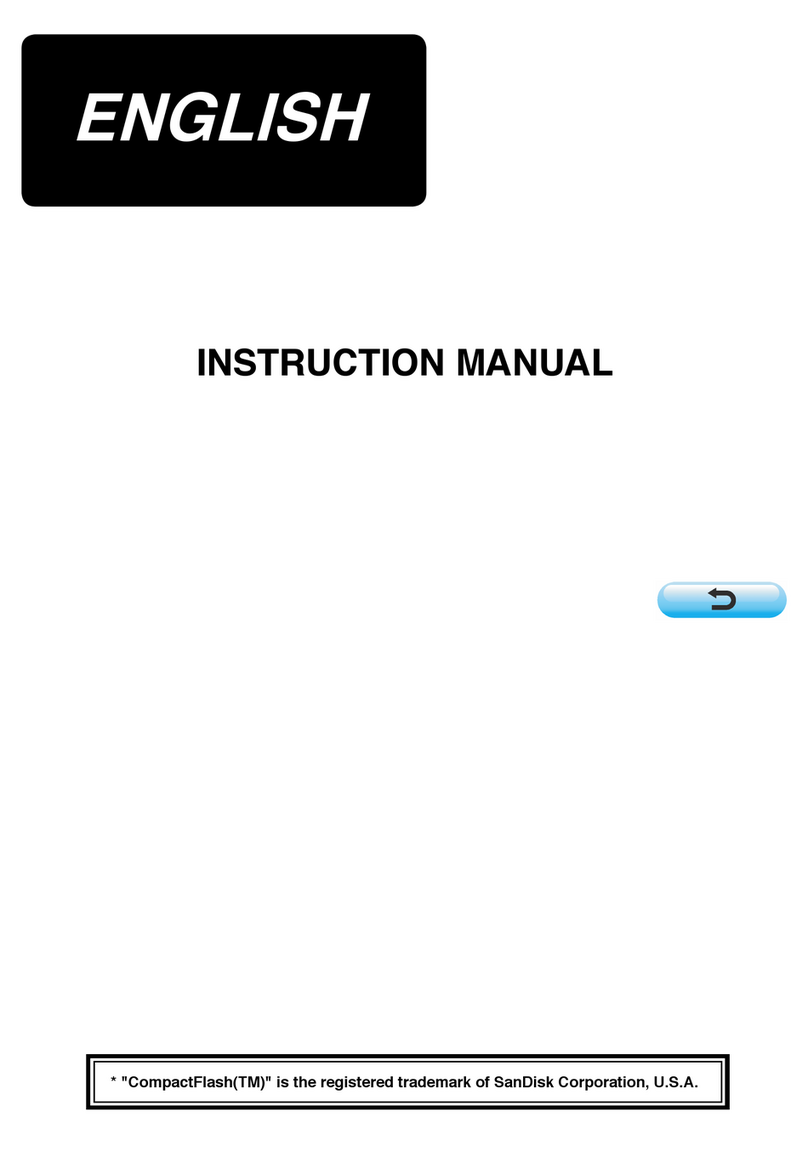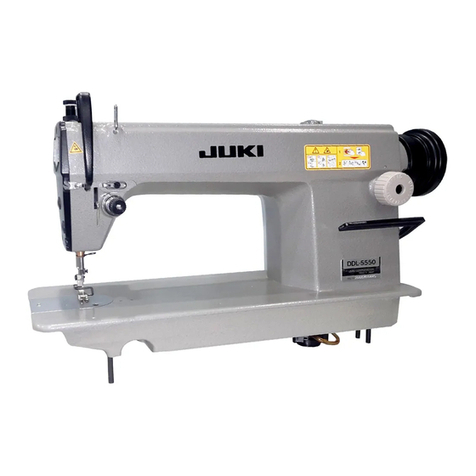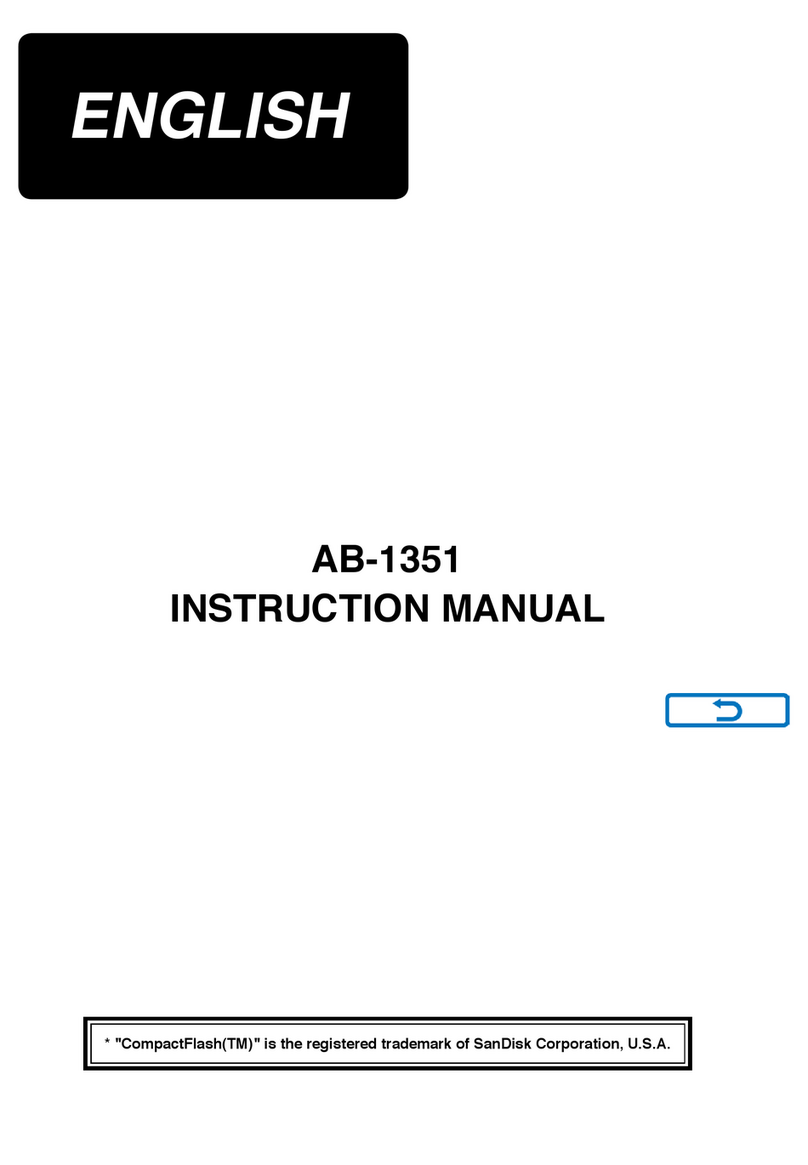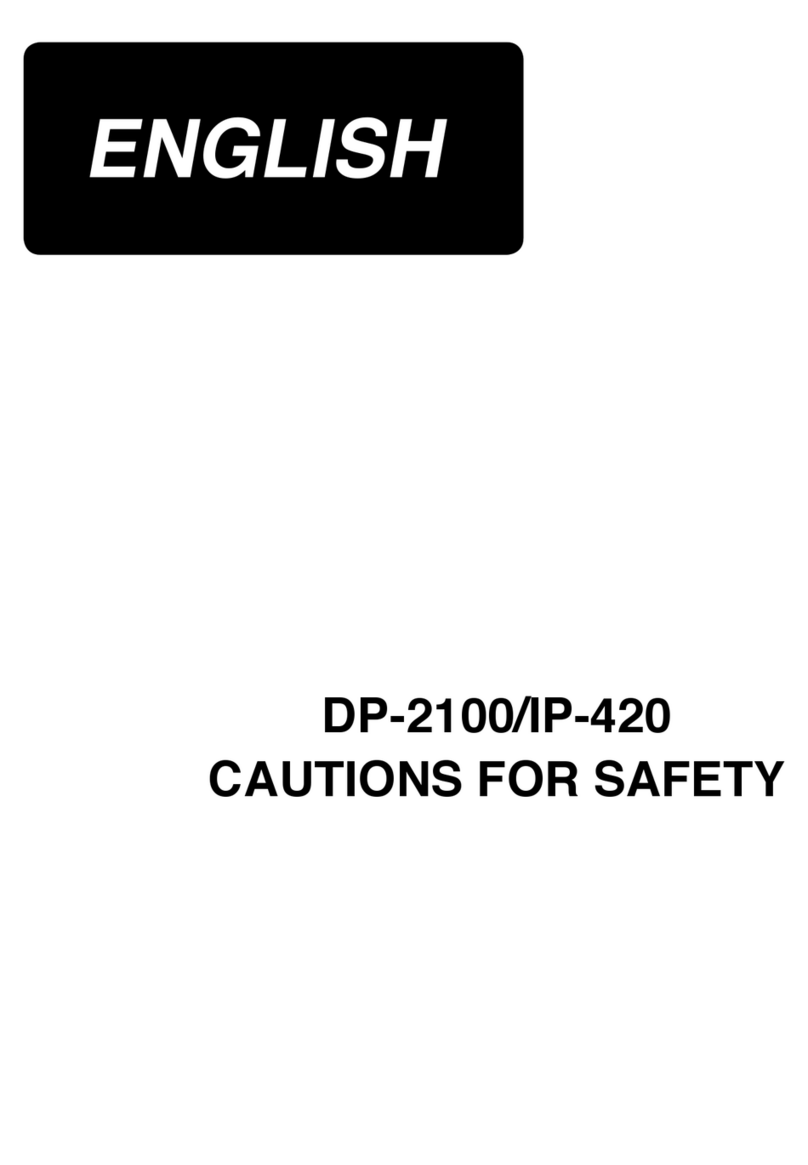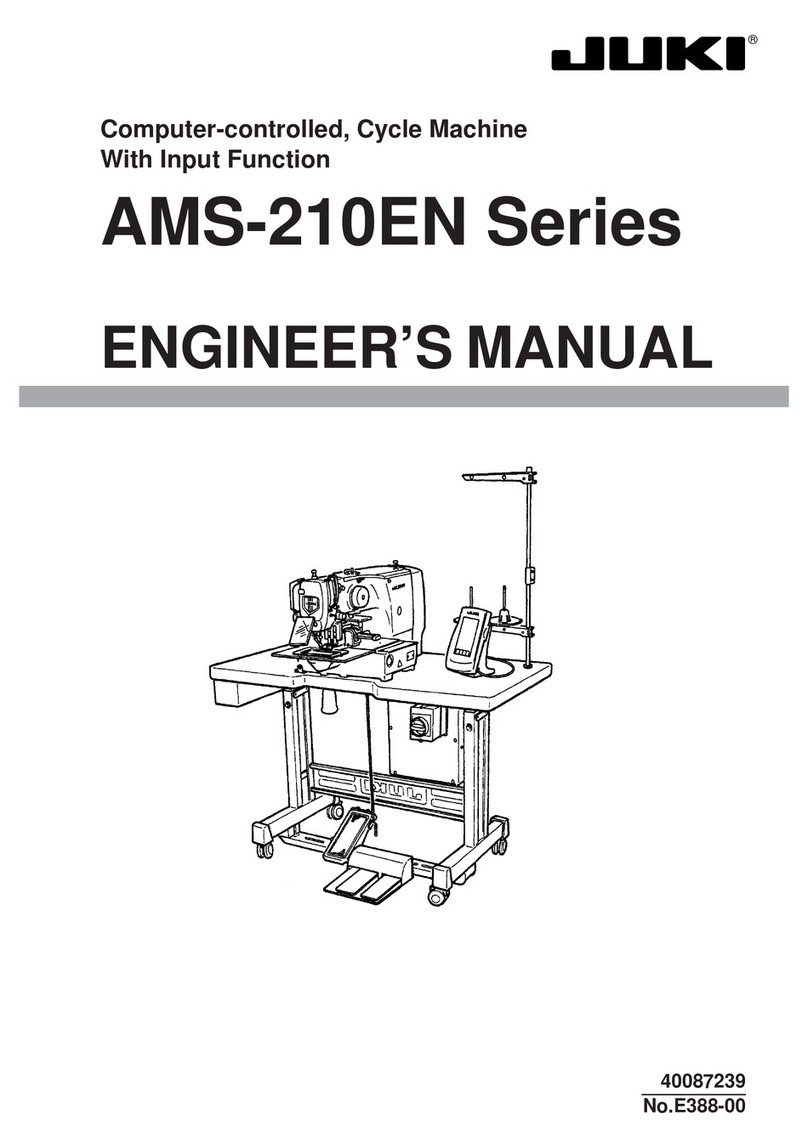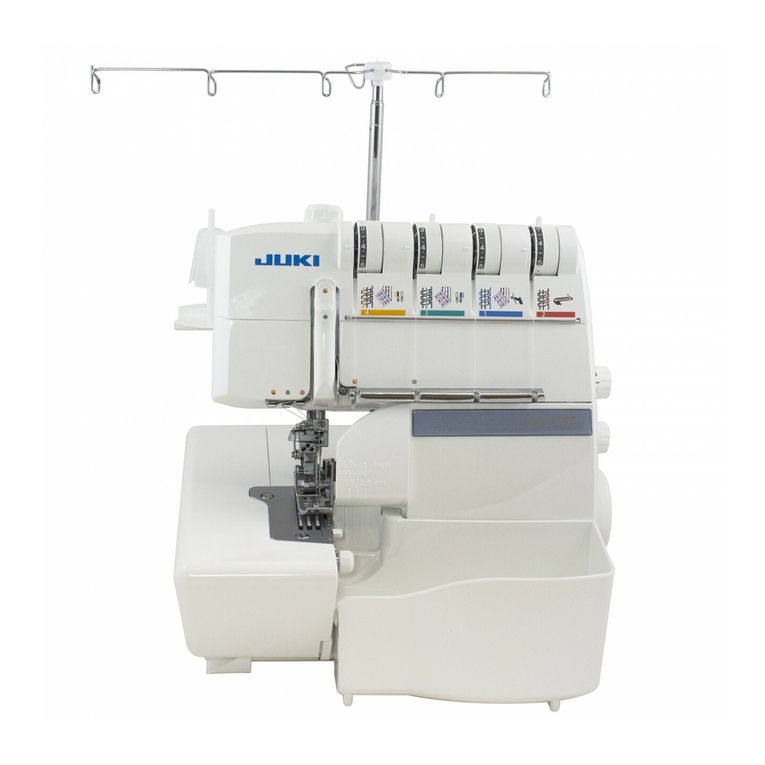
CONTENTS
1. SPECIFICATIONS......................................................................................................... 1
2. INSTALLATION............................................................................................................. 4
2-1. Installation of the sewing machine...............................................................................................4
2-2. Attaching the belt cover ................................................................................................................4
2-3. Inserting the needle .......................................................................................................................5
2-4. Installing the control panel ........................................................................................................... 6
3. PREPARATION OF THE SEWING MACHINE ............................................................. 6
3-1. Lubrication......................................................................................................................................6
3-2. Adjusting the amount of oil in the hook ......................................................................................7
3-3. Adjusting the amount of oil (oil splashes)................................................................................... 8
3-4. Winding the bobbin thread............................................................................................................9
3-5. Inserting the bobbin case and the bobbin................................................................................. 10
3-6. Threading the machine head ...................................................................................................... 11
3-7. Adjusting the pedal...................................................................................................................... 11
4. ADJUSTING THE SEWING MACHINE ...................................................................... 12
4-1. Adjusting the thread tension ......................................................................................................12
4-2. Adjusting the zigzag width..........................................................................................................13
4-3. Adjusting the pressure of the presser foot ............................................................................... 14
4-4. Adjusting the height of the presser bar .....................................................................................14
4-5. Adjusting the micro-lifting mechanism of the presser foot ..................................................... 14
4-6. Adjusting the stitch length..........................................................................................................15
4-7. Adjusting the denser stitching ...................................................................................................15
4-8. Height and inclination of the feed dog....................................................................................... 16
4-9. Attaching/removing the hook .....................................................................................................16
4-10. Adjusting height of the needle bar ............................................................................................. 17
4-11. Adjusting the needle-to-hook timing and the needle guard..................................................... 17
4-12. Adjusting the stop position of the needle..................................................................................18
4-13. Adjusting the thread trimmer...................................................................................................... 19
4-14. Needle thread feeding device ..................................................................................................... 20
4-15. Position of the wiper.................................................................................................................... 20
5. OPERATION OF THE SEWING MACHINE................................................................ 21
5-1. How to operate the pedal (In the case of the direct-drive type sewing machine).................. 21
5-2. One-touch type reverse feed switch .......................................................................................... 21
5-3. Changing over the needle-throwing method............................................................................. 22
5-4. LED light ....................................................................................................................................... 22
6. OPTIONAL .................................................................................................................. 23
6-1. Pedal-operated reverse feed device (RF-1) ............................................................................... 23
6-2. Joining foot for the lockstitch presser foot............................................................................... 23
6-3. Auxiliary thread take-up kit .........................................................................................................23
7. MOTOR PULLEY AND BELT ..................................................................................... 24
8. TROUBLES AND CORRECTIVE MEASURES .......................................................... 25

